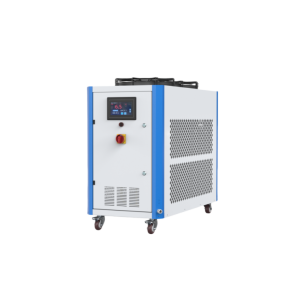Chillers are essential components in plastic injection molding processes. They help to maintain the optimal temperature of molds and machinery, ensuring efficient and high-quality production. Here are the main types of chillers used in this context:
Description: Utilize ambient air to dissipate heat from the coolant.
Advantages: Easier installation, no need for a cooling tower, suitable for areas with limited water supply.
Disadvantages: Less efficient in hot climates, larger footprint required.
Description: Use water to remove heat from the coolant, usually in conjunction with a cooling tower.
Advantages: More efficient, compact design, better performance in hot climates.
Disadvantages: Requires a steady water supply, higher installation and maintenance costs.
Role: Maintains consistent and optimal mold temperature to ensure the quality of molded parts.
Impact: Prevents defects such as warping, shrinkage, and stress cracking.
Role: Faster cooling leads to shorter cycle times, increasing production efficiency.
Impact: Higher throughput and reduced production costs.
Role: Prevents overheating of injection molding machines and auxiliary equipment.
Impact: Extends the lifespan of machinery and reduces maintenance costs.
Role: Efficient chillers reduce overall energy consumption.
Impact: Lower energy bills and a smaller environmental footprint.
Chillers are used to cool the molds, hydraulic systems, and other components of the injection molding machine. By maintaining a stable and optimal temperature, chillers ensure that the molded parts are produced with high precision and consistency.
TOPSTAR Air Chillers adopt fin condensers (without the need of cooling water) with the features of rapid heat transmission and excellent heat dispersion. This series can be afforded cooling ranges from 5~35℃ (temperature-controlled accuracy at ±2℃); the compressors’ power ranges from 5HP~50HP and cooling.



